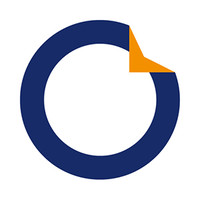Title Page
-
Conducted on
-
Prepared by
-
Location
Control Measures
Asbestos Management
-
A survey has been undertaken to establish whether asbestos containing materials are present in the premises.
-
Work with asbestos containing materials is carried out by licenced contractors.
-
Comments
Battery Charging
-
Battery chargers are regularly checked and maintained.
-
Employees have been instructed to immediately report details of any faulty or damaged equipment.
-
Battery charging equipment is in good condition.
-
The battery charging area is well ventilated to ensure that concentrations of flammable gasses do not build up during the charging process.
-
The battery charging area is free from any visible sources of ignition.
-
A suitable fire extinguisher is located in the vicinity of the battery charging area.
Confined Spaces
-
Every effort is made to avoid entry into confined spaces.
-
A safe system of work has been developed for entry into confined spaces.
-
Specific risk assessments have been undertaken on work in confined spaces.
-
A permit to work system is used for all activities or operations that are carried out in confined spaces.
-
Testing / sampling of the atmosphere in the confined space is carried out.
-
Arrangements are made to ensure that the correct equipment is available and checked before entry in to the confined space.
-
A suitable communication link is established.
-
Naked lights, matches or smoking are strictly banned within a confined space.
-
Petrol, diesel or LPG powered equipment is not allowed into the confined space and arrangements are made to ensure that exhaust systems outside are sited away from the opening to the confined space.
-
Whilst workers are in the confined space they are kept under constant observation by an attendant outside.
-
The person keeping watch outside the confined space is capable of summoning assistance rapidly in emergencies, is trained in rescue techniques and does not enter the confined space until assistance arrives.
-
Written procedures are in place to be followed in the event of an emergency
-
Comments
COSHH
-
A complete list of all substances hazardous to health used, stored or generated on the premises has been prepared.
-
Supplier’s health and safety data sheets have been obtained for all substances hazardous to health used or stored.
-
A Manager or Supervisor monitors the COSHH control measures at appropriate intervals.
-
Local exhaust ventilation equipment is in use and appears to be adequate.
-
The local exhaust ventilation equipment is thoroughly examined and tested by a competent person at least once in any 14-month period.
-
Suitable records of the examination and testing of local exhaust ventilation equipment are kept for at least 5 years.
-
Hazardous substances are stored safely.
Display Screen Equipment
-
Specific risk assessments have been completed on display screen equipment at workstations where it forms a significant part of the job.
-
Users' activities are planned so that work is periodically broken up by activity changes.
-
Workstation accessories are provided if requested.
-
Suitable seating is provided.
-
Eyesight tests are available for display screen equipment users upon request.
-
Corrective spectacles required by users whilst working at the display screen equipment are provided free of charge.
-
The workspace is arranged to provide safe means of access to and egress from the workstations.
-
Comments
Electrical Safety
-
The fixed electrical installation for the premises is inspected and tested at the prescribed intervals by a competent person.
-
The fuses and isolation switches are suitably labelled.
-
All portable electrical appliances are inspected and tested by a competent employee or a contractor.
-
There is an inventory of all items of portable electrical appliances.
-
Employees report details of any damaged or faulty appliances observed, which are taken out of use until either effectively repaired or replaced. Portable electrical appliances are in good visual condition.
-
Residual current devices are fitted to mains electrical supplies within the premises.
-
Adequate electrical sockets are available throughout the premises to minimise the need to have multi-point adapter sockets or extension cables.
-
Single insulated cable runs are properly protected by trunking or conduit.
-
Unobstructed access is provided to all electrical switchgear equipment.
-
Low voltage portable electrical appliances are used where there is an increased risk of electrical hazards due to workplace hazards or environment.
Fire Safety Management
-
The person responsible for fire safety in the premises has been identified.
-
A competent person/persons has been identified.
-
A specific fire risk assessment has been carried out.
-
A fire evacuation drill is undertaken at suitable intervals.
-
The fire warning system provided is adequate for the premises.
-
The fire warning system is serviced and examined by a competent servicing engineer on a six-monthly basis.
-
The fire warning system is tested at weekly intervals.
-
Fire escape routes are clearly identified with the appropriate signs, including directional arrows.
-
Fire escape routes are unobstructed and are readily available for use in an emergency.
-
Fire exit doors are clearly marked with 'Fire Exit' signs.
-
Fire exits are free from obstruction both internally and externally and can be easily opened in the event of an evacuation...
-
Suitable fire extinguishers are provided for the occupancy risks.
-
Fire extinguishers are annually inspected and serviced by a competent person.
-
Employees have been trained on the operational use of portable fire extinguishers.
-
An emergency lighting system is provided for areas where there is no borrowed illumination, or where persons work after the hours of darkness.
-
The emergency lighting system is tested at monthly intervals by in-house personnel.
-
An annual full discharge test of the emergency lighting system is conducted by a competent service engineer.
-
Adequate arrangements are made for the removal and disposal of combustible waste materials.
-
Smoking is only allowed in designated areas.
-
An emergency plan is in place.
Fork Lift Trucks
-
Suitable signs are displayed to warn that fork lift trucks operate in the premises.
-
Audible warning devices are fitted on the fork lift trucks to give warning of movement.
-
An audible warning device is provided on the fork lift trucks to provide additional warning when reversing.
-
Amber flashing lights are fitted to the fork lift trucks to provide additional warning of movement.
-
Checks are made to ensure that audible warning devices and flashing lights are working.
-
Plates detailing the safe working parameters are clearly displayed on the fork lift trucks.
-
Fork lift trucks are restricted to employees who are trained to the prescribed standard by an accredited training provider.
-
Both counterbalance and reach trucks are used on site and staff only use the type of fork lift truck they have been trained on.
-
To prevent unauthorised use, the key is removed from the ignition and kept in a secure place when fork lift trucks are left unattended.
-
All lifts are properly planned beforehand.
-
The fork lift truck is fitted with a restraining belt.
Gas Supply and Appliances
-
Gas pipework is protected from damage by vehicles by the provision of robust barriers or is safe by position.
-
Gas equipment is protected from vehicular damage.
-
Gas pipework is properly supported.
-
Gas equipment is properly supported.
-
The area around the meter and incoming services is kept free from obstruction.
-
In the event of a leak, all reasonably practicable steps are taken to shut off the gas supply and inform the gas supplier.
-
Employees have been specifically instructed on the action to take in the event of a gas leak, on smelling gas in the building and in case of fire.
-
The gas supply isolators are readily identifiable.
-
The gas supply isolators are readily accessible.
-
The premises gas appliances and installation/supply pipes are subject to regular annual inspection by a competent person.
Health & Safety Management
-
A senior manager has taken responsibility for health and safety.
-
A competent person has been appointed internally within the organisation.
-
An adequate Health and Safety Management System has been prepared and implemented.
-
A current Health and Safety Policy Statement is displayed within the workplace.
-
The standards of health and safety are regularly monitored and detailed records kept.
-
Suitable consultation arrangements have been made with employees on health and safety issues.
-
Accidents/incidents are recorded in the Accident Book.
-
All accidents and/or incidents are investigated to determine the probable cause.
-
The details of all accidents entered in the Accident Book are reviewed regularly to identify causation factors/trends etc.
-
No enforcement action has been received in the last 12 months.
-
The employer has identified the health and safety training needs for each of the employees, has arranged for the relevant training to be carried out and has maintained accurate individual training records.
-
Adequate information and instruction is given to employees on health and safety issues.
-
All required statutory notices are displayed in prominent positions.
-
Arrangements are in place for all the required plant and equipment to be thoroughly examined by a competent person at the prescribed intervals.
-
Detailed records of all statutory examination/tests etc., are maintained and they are available for inspection.
-
Health surveillance is provided where the need has been identified by risk assessment.
-
An assessment of first aid needs has been carried out.
-
The findings of the first aid assessment have been implemented.
-
Comments
Highly Flammable Liquids
-
The quantity of highly flammable liquid issued to each workstation is limited to half a/one day’s supply.
-
Highly flammable liquids are dispensed from proprietary safety cans or sealed containers which are clearly marked to identify their contents.
-
Storage in the workroom is restricted to below 50 litres in sealed containers kept in a fire resisting cupboard/bin that is clearly marked to identify its contents.
-
A dedicated fire resisting cupboard/bin is used for all storage.
-
The areas where highly flammable liquids are kept or used had been designated as ‘no smoking’ areas, suitable warning signs are displayed and the policy strictly enforced.
-
There are no sources of ignition or combustible materials in areas where highly flammable liquids are kept or used.
Lifting Equipment & Accessories
-
All items of lifting equipment and accessories are suitable for the required task.
-
All lifting operations are properly planned before work commences to reduce the risk of an accident involving the lifting equipment or the load being lifted.
-
Prior to use, lifting equipment and accessories are checked for obvious defects by the user.
-
Lifting equipment is marked with the safe working load.
-
Lifting equipment is marked with a unique identification number.
-
Lifting accessories are marked with their safe working load.
-
Lifting accessories are marked with a unique identification number.
-
There is an inventory of all lifting equipment and accessories showing the specification and date of test.
-
Once used, lifting equipment and accessories are returned to the storage area without delay.
-
Hooks not fitted with safety restraining catches are only used for straight lifts where there is no risk of the lifting equipment or accessories attached from becoming detached from the lifting hook.
-
Comments
Gas Cylinders
-
Cylinders are stored in a safe, secure place with adequate ventilation away from sources of ignition. The area has been designated a 'no smoking' area.
-
The storage compound is securely fenced, having adequate means of access and egress and the appropriate warning signs displayed.
-
Cylinders are securely stored in an upright position in order to minimise the possibility of accidental damage to the valves.
-
The storage area is free from combustible materials and clear access is available to all areas of the compound.
-
The storage area is separated from the main building/neighbouring premises by a suitable fire wall.
-
Procedures are in place to ensure that in the event of an emergency/fire the emergency services will be made aware of the location of the gas cylinders.
-
Liquefied petroleum gas cylinders are securely located in an upright position whilst in use.
Machinery Safety
-
Machinery is positioned to prevent an entrapment risk with other machines or fixed structures.
-
Machines are stable when in use.
-
Machines are suitable for the process.
-
Suitable guards are fitted to prevent access to dangerous parts of the machines.
-
The guards fitted are correctly secured in position to prevent access to dangerous parts of machinery.
-
The adjustable guards fitted are correctly positioned to prevent access to dangerous parts of machinery.
-
Regular inspection and testing is done to ensure that all guards are correctly adjusted and working correctly.
-
Suitable perimeter fencing is fitted to prevent access to dangerous parts of machinery.
-
The perimeter fencing is secure to prevent access to dangerous parts of machinery.
-
Access doors, gates or other parts of the perimeter fencing that are required to be opened are either locked in position or fitted with suitable safety devices that isolate the dangerous parts of machinery when opened.
-
Suitable safety devices are fitted where fixed guarding or fixed fencing cannot be provided.
-
Properly positioned emergency stop devices are fitted at machines where considered necessary.
-
Emergency stop devices are easily reached.
-
Emergency stop devices are easily actuated.
-
Machinery controls are clearly visible and identifiable.
-
Machinery controls are in good condition.
-
Machinery controls are in a safe position for the operator.
-
Individual machines are provided with a separate isolation facility.
-
Lighting is of the type suitable for use in an environment where machinery work is carried out.
-
Machinery lubricants and coolants appear to be well contained with no signs of excessive splashing.
-
Tools and associated cutting equipment are maintained and repaired as necessary.
-
Spare tools and bits are stored in drawers, cabinets or racks that prevent damage.
-
The power press safety guarding and devices are inspected and tested to ensure their safety within 4hours of the start of a working shift or where the tools have been reset during the shift.
-
Inspections and testing of the power press safety devices are recorded on a certificate attached to each machine.
Manual Handling
-
Mechanical/automated assistance has been introduced to deal with heavy or awkward shaped material, equipment or loads and to reduce the number of loads that have to be handled manually.
-
The distances loads have to be carried has been reduced to the minimum possible in the majority of cases.
-
Key workers ensure that other persons follow the correct lifting practices and that they are trained in ergonomic techniques.
-
All handling equipment is identified and recorded.
-
Certificates of examination are available for all handling equipment.
-
Wherever possible, manual handling tasks have been reduced by the use of mechanical handling aids.
-
Appropriate manual handling aids are provided.
-
Appropriate manual handling aids are being used.
Noise
-
Noise Risk Assessments have been carried out.
-
Hearing protection is available to all employees working in areas where average noise exposure levels reach the lower exposure action value of 80dB(A).
-
Suitable hearing protection is provided and worn by all employees working in areas where average noise exposure levels reach the upper exposure action value of 85 dB(A).
-
Areas with average noise exposure levels above 85 dB(A) are clearly identified as hearing protection zones with the mandatory hearing protection warning signs displayed.
Personal Protective Equipment
-
Personal protective equipment needs have been identified.
-
Suitable personal protective equipment needs have been identified.
-
If more than one item of personal protective equipment is worn, it is ensured that the items are compatible.
-
Personal protective equipment is maintained in an efficient state
-
Appropriate storage facilities are provided for personal protective equipment when it is not in use
-
Reasonable steps are taken to make sure employees use personal protective equipment properly.
Pressure Systems
-
The system is clearly marked with its safe working pressure.
-
The system is fitted with a pressure gauge.
-
The pressure gauges are checked regularly.
-
The system is fitted with condensation draining valves.
-
Condensate is drained from the system in an environmentally correct way at regular intervals.
-
The compressed air lines are secured in position where they are protected from mechanical impact or other damage.
-
All hose connectors seen at the time of the visit appeared to be appropriate for the task, in good condition and free from visual defect.
-
Comments
Risk Assessment
-
A competent person has been identified to carry out Risk Assessments.
-
Suitable and sufficient Risk Assessments have been carried out for activities and issues identified as being of significant risk.
-
Risk Assessments are carried out for non-routine work.
-
The significant findings of the Risk Assessments are shared with employees and other persons affected by the risks.
-
Risk Assessments are reviewed.
Road Vehicles
-
Vehicles more than 3 years old and used on the public highway have current and valid MOT Test Certificates.
-
All drivers have adequate insurance cover.
-
Drivers licences are checked regularly to ensure that they are of the correct class for the vehicles driven.
-
All drivers are instructed to carry out prescribed pre-journey checks including internal and external safety checks and where appropriate load security.
-
Vehicles are equipped with materials/equipment for use in the event of a breakdown.
-
All vehicles doors are capable of being locked from the inside.
-
Clear written instructions are given on the safe use of mobile phones in vehicles.
Site Work
-
Where circumstances dictate a competent person visits and risk assesses the safety of site / working conditions prior to commencement of work.
-
Employees are instructed in writing to refer health and safety concerns to management and not to commence work where unacceptable hazards are identified during risk assessments.
-
Arrangements are made to identify and follow any relevant Clients' health and safety and fire procedures including access to prohibited areas.
-
Sites and working conditions are routinely monitored by a competent supervisor and a record maintained.
-
Where non-standard work equipment is used by employees they are adequately trained and supervised in its safe use.
-
Written safe working procedures which cover all related health and safety issues have been produced and implemented.
Storage Areas
-
There is adequate storage space.
-
There is regular inspection and maintenance of the racking.
-
Racking is free from obvious signs of damage, distortion or strain.
-
Warning signs are displayed stating that climbing on racking/shelving is prohibited.
-
Storage racking is securely fixed to the building fabric.
-
The maximum load capacity of the racking is clearly displayed.
-
Employees have been made aware of the maximum load capacity of the racking and are instructed not to exceed it.
Welding
-
Welding equipment is regularly visually inspected to ensure that it is maintained in good condition.
-
The equipment seen appears to be in good condition, with cables in good condition and all connections correctly made.
-
Welding is only undertaken in well ventilated areas.
-
Local exhaust ventilation is provided to remove welding fumes 'at source'.
-
The local exhaust ventilation provided appeared in good working order and to be working efficiently.
-
The local exhaust ventilation equipment is visually inspected at weekly intervals and any defects found are rectified.
-
When welding is undertaken in confined spaces, forced air ventilation is provided and air monitoring is undertaken, or suitable respiratory protective equipment (self contained or air-fed breathing apparatus) is provided and used.
-
Workpieces/vessels which may have contained flammable materials are thoroughly purged of residual content and are subject to a gas free procedure, where necessary, before heat is applied.
-
Suitable screening is provided and used.
-
Suitable fire fighting equipment is provided nearby during welding operations.
-
A pressure regulator is fitted to the outlet valve of each gas cylinder.
-
The fuel gas and oxygen fuel lines are equipped with flashback arrestors.
-
Gas cylinders in use are secured in an upright position to prevent them falling over.
Work at Height
-
Before work commences, a plan is agreed on how the activities are to be carried out to ensure that there is safe access and egress for persons who are required to work at heights.
-
Work at height is carried out from a safe position on the building, structure or scaffold.
-
Work at height is only carried out when the weather conditions are appropriate.
-
The work equipment selected is appropriate to the nature of the work to be performed and will allow for safe passage.
-
The ladders provided for use are of a suitable standard for the intended use.
-
Ladders are only used as a workstation where the use of other safer equipment cannot be used due to specific site features or it is not justified because of the low risk and the short duration of use.
-
Ladders are only used as a means of access where the use of a staircase or other more suitable access equipment cannot be justified because of the low risk and infrequent use.
-
Ladders are stored in a suitable place that is secure and prevents use by unauthorised personnel.
-
The area is cordoned off by the erection of a soundly constructed barrier with suitable warning signs displayed.
-
Notices are posted warning persons below that work is being carried out above.
-
The scaffold is assembled/dismantled/altered by competent workers under the supervision of a competent person.
-
The work is properly planned and supervised to enable immediate rescue in the event of an emergency.
-
Comments
Workplace Safety
-
The workplace is clean, tidy and in good decorative order.
-
The workplace is adequately heated.
-
The workplace is adequately ventilated by mechanical means or by opening windows.
-
The workplace is well lit.
-
The edges of steps and stairs are clearly marked.
-
Suitable handrails are fitted to stairways.
-
Shelving is strong and secure and suitable for the materials stored on it.
-
The floor areas are in good condition and free from slip/trip hazards.
-
The floors are free from slipping and tripping hazards.
-
The workplace provides adequate space for the employees.
-
The workspace is arranged to provide safe means of access to and egress from the workstations.
-
Adequate welfare facilities are provided and maintained for both male and female employees.
-
Suitable facilities are provided to enable employees to sit and obtain a hot drink/heat meals away from their main place of work.
-
All windows, doors and other transparent surfaces are either made of safety material or are suitably protected against breakage.
-
Safety signs are provided as indicated by risk assessment.
-
Safety signs comply with relevant standards.
-
Suitable eating facilities are provided for employees.
-
Cleaning schedules are in place to maintain the required standard of cleanliness and employees are knowledgeable in the use of these schedules.
Sign Off
-
Name and Signature















